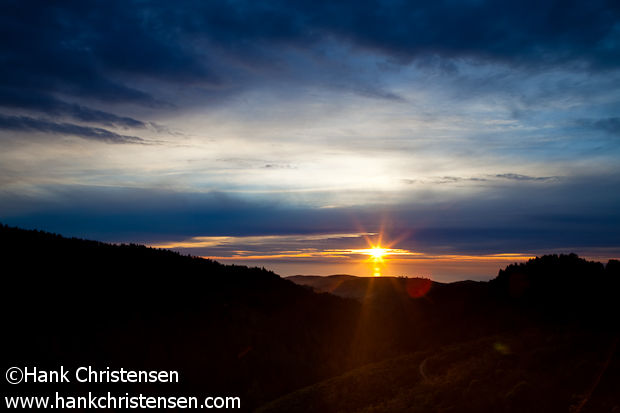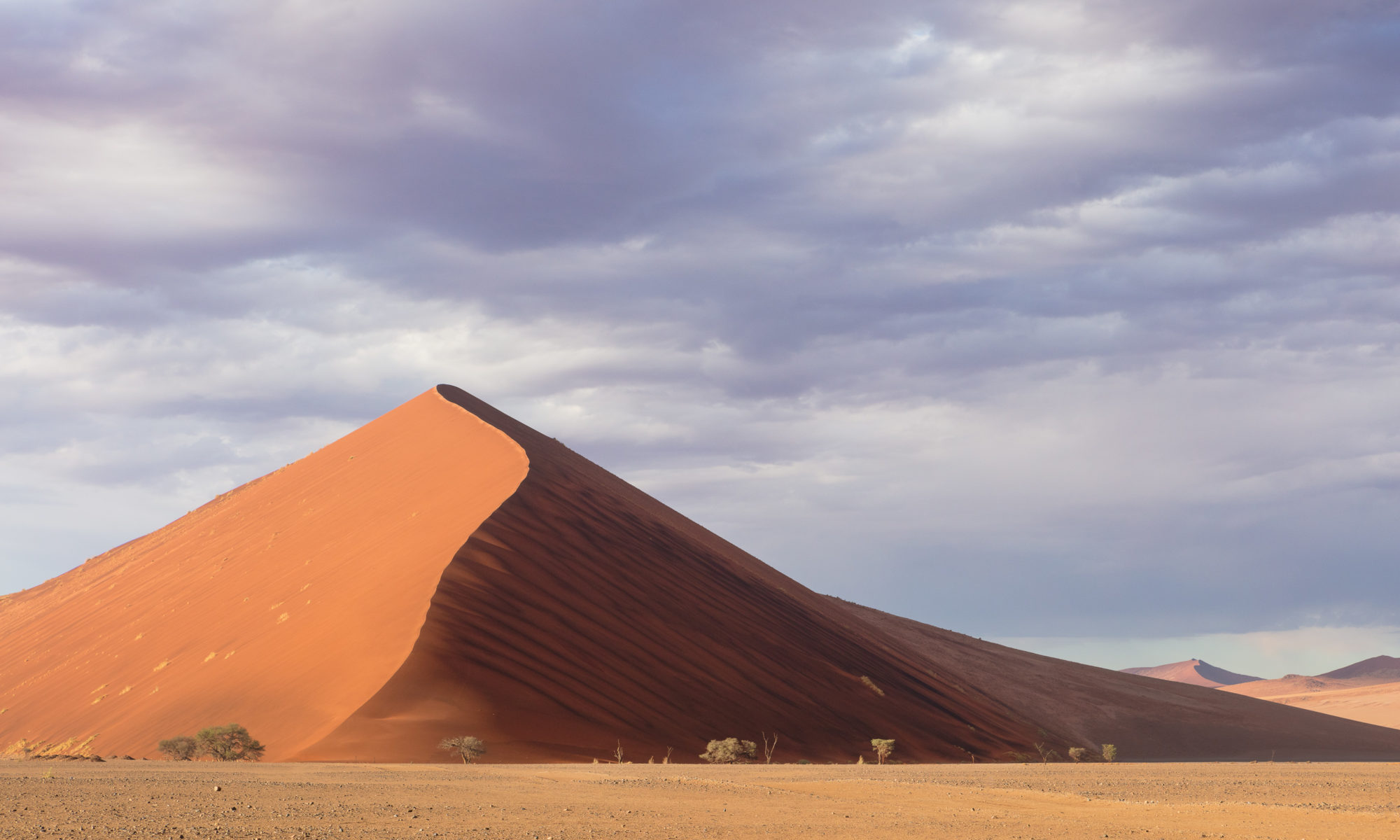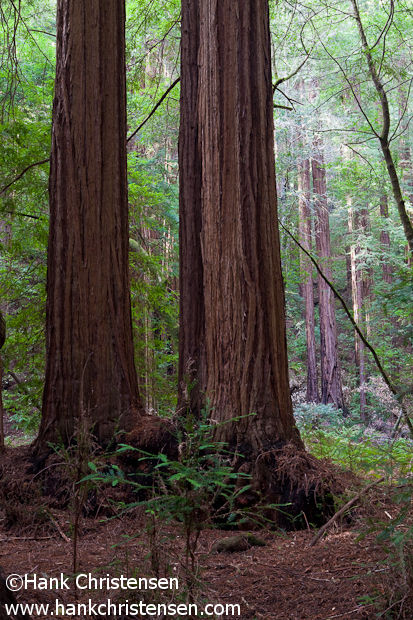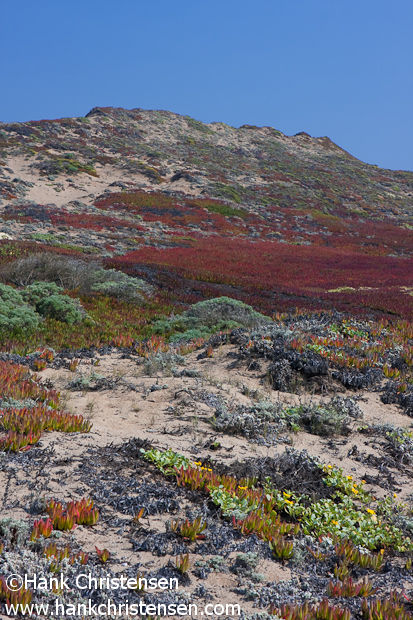
While one of the main draws is its old-growth and second-growth redwoods forests, Purisima Creek Redwoods just west of Redwood City also offers expansive views of the Pacific Ocean. I took this photo earlier this month, on a hike meant to capture some shots of the park’s redwoods and creek. However, if the weather was right, I thought it might be a nice opportunity for a good sunset.
I was toward the bottom of the park, trying to get some panoramas of redwood trunks shrouded in fog when I realized I only had 20 minutes to get back up the trail to the spot I had picked on the way down. I ran up the trail as fast as I could, climbing a good 700 feet in elevation, just in time to see the once-hidden sun peek out from beneath a thick cloud bank. I set up my tripod, threw the camera on, and started capturing images. This was one of my favorites due to the great blues reflecting off the bottom of the clouds which offset the warm tones of the sunset.





